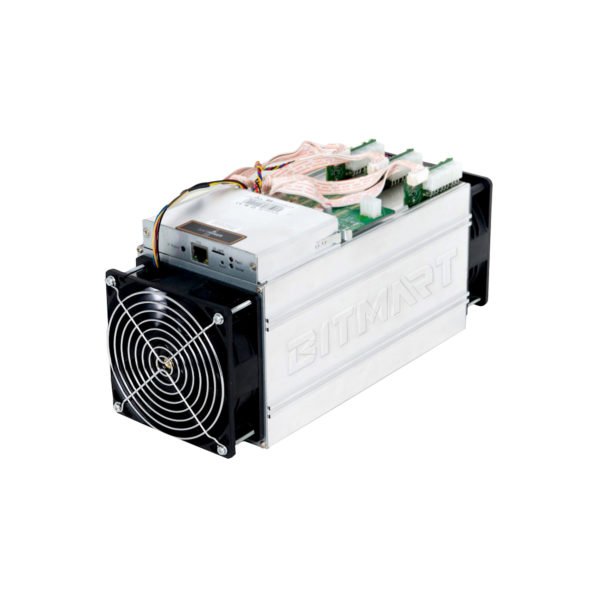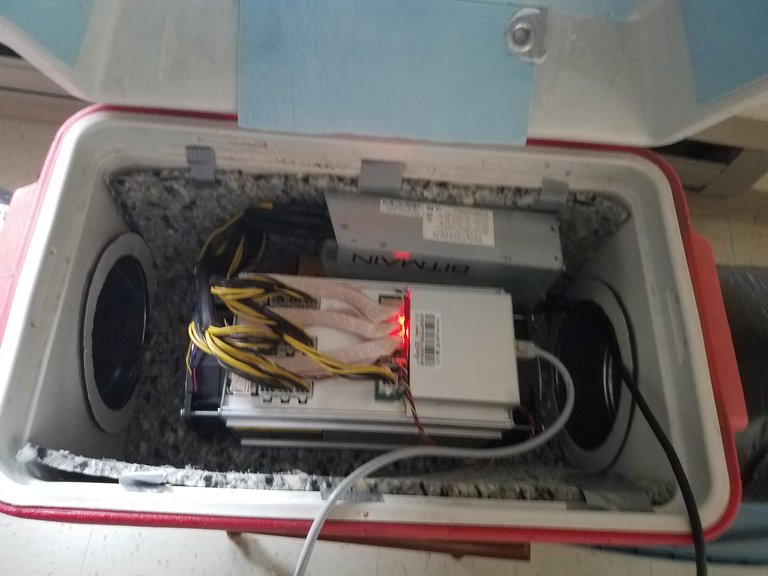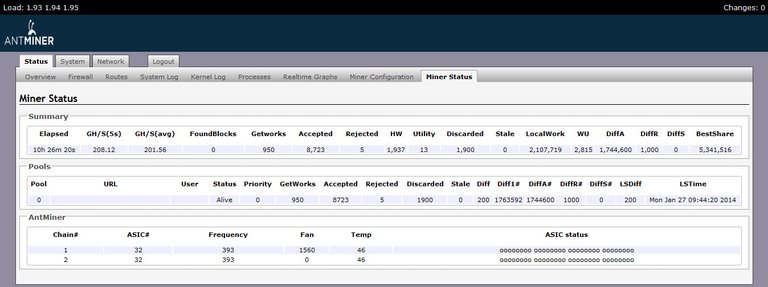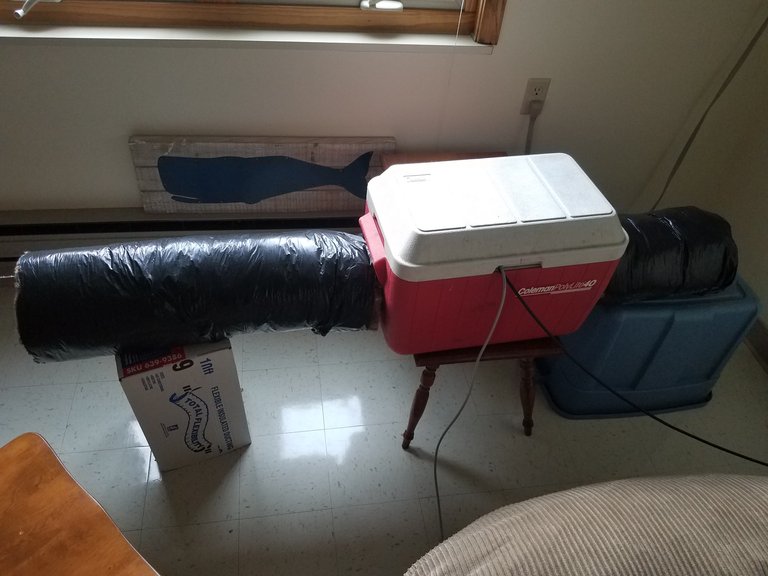So a little while back I purchased a brand new D3 ASIC Antminer off Ebay for about $300 bucks. Earlier this year these miners were going for $1200, and last year October $10,000!

So what happened?

For reference, at the time of this post the difficultly rate for DASH is 78 Million! 13 times what is shown on this chart.
As you can see from this chart, the difficulty of mining DASH skyrocketed once the D3 came out. The machine was multiples times stronger then anything else on the market and very reasonably priced. The first batch of D3's were so profitable, each was making 15k a month! This of course was very short lived as the difficulty multiplied. By the end of the year, machines that made $150 a day were lucky to be making $5. This, combined with the crash in crypto prices has bottomed out the price of these machines, and that is how I was able to snag one and fulfill my mining hobby.
What is mining, how does it work and what do you get out of it?
Mining is essentially a computer racing to solve a complex algorithm before other computers on the network, in order to receive the block reward. This block reward gifts the computer who completes the problem a certain amount of tokens and this process is repeated indefinitely until all coins are mined.
Block reward amounts and time vary for each cryptocurrency. If curious about the block rewards further, a google search will provide you with details on which token you are curious about. Some cryptocurrencies also give block producers the fees paid during all transactions of a block.
What has happened as the difficultly has skyrocketed? It has become almost impossible for individual miners to find a block without joining a mining pool. A mining pool being where a bunch of miners pool their hashing power (hashing- a term to measure mining power).There are a couple very large ones (antpool, nicehash, prohashing). The drawback is that has made Bitcoin and some other currencies more centralized. Basically, Bitcoin nodes work to verify transactions and engage in block confirmations. Miners "mine" the blocks and facilitate transactions with their computing power. There is much more to it then that, but for a basic outline it will suffice.
My setup, the process and how to start your own.
The first step is to buy your own miner. CPU (mining with your computer) hasn't been profitable for years. GPU (graphics cards) are mainly for mining ethereum, but I haven't delved into that yet. You can purchase a new D3 and power source from Bitmain for about $300, but shipping is about another $150, so Ebay is your best bet. Try to be patient and diligent for a good deal. Mining is not profitable anymore, and unless your landlord is paying electricity (like me), you will actually lose money mining.
My completed setup

- I manufactured a makshift sound box out of a cooler in order to keep the noise down in the apartment. It gets loud.*
1.
Once you receive your miner, it is fairly simple to get going. The first step is to plug everything in. This include the power source and all its plugs into the Antminer and then the power source into the wall. Don't forget the Ethernet cable into your router also. There is no power switch on the machine, so as soon as it is plugged in, it will start running!
2.
This can be the tricky part. Once your miner is up and running and connected to the internet, you must find the IP address of the miner. To find it there are a couple different applications you can chose. I use IP Scanner (it's free). You may have to turn off windows firewall protector in order for the IP to show up. Once the IP address is found, you can copy/paste it into most web browsers and it will take you to your Antminer configuration screen.

This screen gives live status of your miners performance and is where you can direct it to mine in a certain pool. Each pool has their own address and network to link to. I linked up with NiceHash (yes the one that was hacked for 33 million last year). It is one of the easiest to join and for my first one, that's what I wanted. To be sure NiceHash isn't technically a minning pool, it is selling your miners power. (see comments). The payouts are also pretty good when compared to other pools. Once I linked to NiceHash though it was all downhill from there. I immediately started mining and with NiceHash they payout in Bitcoin even though the D3 mines the X11 algorithm. I have been earning between $2-3 per day.
3.
It is important to monitor your miner for heat and speed. Sometimes the red light begins to flash and that means your miner is not working at full capacity. One of the chip motherboards is out of sync. To fix this you can either reboot the miner from system settings or simply unplug it from the wall for a few seconds and plug it back in. Miners also get very hot, so have air conditioning or a fan system or something to prevent in from getting too hot. It can get very hot and still run, but it is not the best. My setup looks like this

not sure why it is upside down, but it's not worth to fix it.
So inside I have the cooler lined with carpet padding and some soundproof cloth. At each end I have 6 inch diameter metal ducting connectors. You can find these at a local hardware store. I cut holes in the cooler then inserted these at each end. The black tubes are insulated heating/cooling duct that helps dissipate heat and noise. It is rated for extreme heat, so you don't have to worry about temperature. It also helps prevent dust particles from settling and being sucked into the machines fans.
I have a antminer L3++ on its way, just wasn't satisfied with one miner. I already made the cooler box for this machine, but I think I will join the Prohashing pool just to check it out. Hopefully I will explore GPU mining in the future or FPGA (which I'm not even quite sure what that is yet).
Hope this was interesting/helpful in any way!
Thanks for the very descriptive, interesting article as I understood mining is not profitable unless someone else covers your electricity bill currently, so majority of people are losing money currently in the hope that coin will grow. And why they are paying you in the bitcoin if you are mining Dash?
Nicehash is a "hashpower rental" company, not a mining pool. So when you hash to nicehash you are essentially renting your hashpower to them for an agreed amount in bitcoin per hash. It's slightly different than mining to a mining pool for a given algorithm. I would argue it's not good for the networks, nor is it good for the individuals earnings. But Nicehash is ASIC friendly and rarely has downtime issues, so they've gotten very popular.
That's a very good description. I had forgotten it wasn't a pool, I will change that in the post
A lot of people have been mining cheap, unpopular and easy alt coins in the hope their prices moons at some point and they make a ton of money
There's been a lot of discussion surrounding ASICs vs. GPUs and whether or not ASICs intrinsically weaken the networks on which they participate by consolidating large amounts of hashpower in one place.
I can see the side of the argument that fears ASICS. But on the other hand, ASICs are very similar to GPUs in terms of their ability to hash competitively per invested dollar. And as price comes down on ASICs as competition increases we can probably expect them to start occupying the same place in miner's repertoires. So... they're occuping the same need that GPUs are. And once they're everywhere, the worry about consolidation of hashpower becomes moot.
Nice setup.
This is true, especially given how quickly prices have fallen. Thanks for stopping in spivey
More about #cryptocurrency #mining in these posts:
Cointiply Review & Strategy Guide by abrockman
Merit, a New Under the Radar Cryptocurrency You Can Mine by cryptos
MinnowSmith payout 2018-09-02: 0.261 STEEM by minnowsmith
Ethereum Plans to Attack Its Own Miners by cryptouno
I'm Offline! by letshodl
Il this comment you think is useful please consider vote it